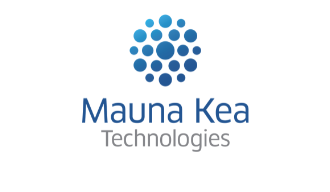Mauna Kea Technologies Announces the Launch of a First in Human Study Combining Robotic Navigational Bronchoscopy and Needle-Based Confocal Laser Endomicroscopy
The Cellvizio® 100 series system with the AQ-Flex™ 19 Confocal Miniprobe™ will be used for the assessment of peripheral lung nodules
Mauna Kea Technologies today announced that, as part of its collaboration with the Lung Cancer Initiative at Johnson & Johnson1, Christopher Manley, M.D., Director of Interventional Pulmonology and Assistant Professor of Medicine at Fox Chase Cancer Center (FCCC) in Philadelphia, and Jouke T. Annema, M.D., Ph.D., Professor of Pulmonary Endoscopy, Amsterdam University Medical Center, have received the authorization from FCCC IRB to start a pilot clinical study, combining nCLE and robotic navigational bronchoscopy, using both Cellvizio and the Monarch™ Platform from Auris Health, Inc., one of the Medical Devices Companies of Johnson & Johnson, for the diagnosis of peripheral lung nodules. This study will be co-funded by the Lung Cancer Initiative at Johnson & Johnson and Mauna Kea Technologies (Clinicaltrials.gov: NCT04441749).
The AQ-Flex™ 19 Confocal Miniprobe™ (nCLE) is designed to be introduced into suspected lesions through a fine needle and is compatible with both conventional bronchoscopes and emerging endoluminal robotic bronchoscopes, such as the MonarchTM Platform. The main objective of this study is to assess feasibility and safety of nCLE during robotic navigational bronchoscopy in the analysis of peripheral lung lesions. This study will include 25 patients with peripheral nodules.
“I am truly excited to start this feasibility study and offer two technological breakthroughs to my patients to improve the diagnosis of peripheral lung nodules,” said Dr. Christopher Manley. “The Monarch Platform is transforming the way we navigate towards peripheral pulmonary lesions, while nCLE enables the characterization at microscopic level, in vivo, and in real time inside of these lesions, located outside of the airways, through a needle. The study will assess whether the combination of these two ground-breaking technology platforms can improve the diagnostic yield relative to today’s standard of care.”
“In our recently published study2, we have shown that nCLE enables a 90% accuracy for characterizing malignancy in lung tumors and metastatic lymph nodes with substantial intra- and inter-observer agreements,” said Pr. J. T. Annema, M.D., Ph.D., Professor of Pulmonary Endoscopy, Amsterdam University Medical Center. “The combination of nCLE with robotic navigation bronchoscopy could enable real-time targeting and identification in a much larger proportion of lung tumors than with conventional bronchoscopy techniques and could significantly increase confidence in the adequacy of biopsy sampling. This study is an important step in reaching the desired future state of transitioning the patient care pathway to diagnose and treat in one setting of care.”
“The AQ-Flex™ 19 Confocal Miniprobe is the only cleared nCLE technology capable of imaging tissue microstructures in vivo, in real time and at a cellular level,” said Robert L. Gershon, Chief Executive Officer of Mauna Kea Technologies. “This new study with the Cellvizio and the Monarch platforms is designed to demonstrate the feasibility and safety as well as the unique capability to visualize lung lesions outside the airways, where 85% of lesions reside, and could further facilitate the ability of the Monarch Platform to conduct more targeted biopsies.”
1 The legal entity of the Lung Cancer Initiative at Johnson & Johnson is Johnson & Johnson Enterprise Innovation, Inc.
2 Needle-based confocal laser endomicroscopy (nCLE) for real-time diagnosing and staging of lung cancer. L. Wijmans, J. Yared, D.M. de Bruin, S.L. Meijer, P. Baas, P.I. Bonta, J.T. Annema. European Respiratory Journal 2019; DOI: 10.1183/13993003.01520-2018


